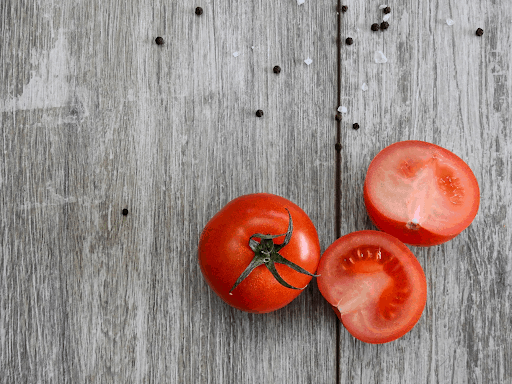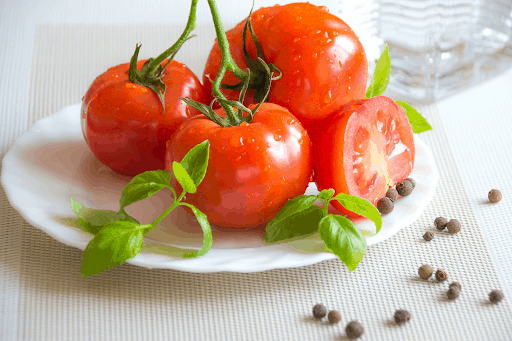One ingredient found in almost every kitchen all year long, but most especially during summertime is tomato. However, to keep this treat long-lasting, sustainable living is one key factor everybody wants to consider. Why? Tomatoes are perishable and may not last even after the end of summer. Hence, you may not enjoy them for long if you do not store and preserve them well.
If you’re considering preserving your fresh tomatoes for a longer and better cooking treat, or maybe you’re looking for the best way to sustain and preserve your tomato flavor for long, then a good place to start is learning how to make the most of your tomato harvest with easy to do techniques on the ways to preserve tomatoes.
Instead of leaving your tomato on the kitchen counter or plate to spoil, why not learn a preservation technique that would work best for you? Preserving your fresh tomato will not only help you make sumptuous dishes all year round but will also save you the cost of buying this treat regularly. Here, we discuss some of the ways to preserve your tomato recipe throughout the seasons.
Preserving Tomatoes in the Freezer
Did you know that many ripe tomatoes retain their flavor and quality for two to three days if kept at room temperature? While tomatoes are usually acidic, their pH level is a great determinant of the degree of their ripeness. In essence, the riper a tomato is, the less acidic it becomes and the more difficult it will be to preserve them. It is why a technique like freezing works wonders.
The fun part of this method is that you can preserve your tomato in any form, whether whole, raw, diced, chopped, skinned, or cooked. However, this method can be a chore to complete as it may cause the tomato to develop a mushy texture, especially for thawed raw tomatoes. On the other hand, you want to avoid seasoning them before freezing as this method may not retain the ingredients. While it is possible to freeze your tomato in different forms, the techniques, however, may differ.
To begin the process, prepare your tomato. Select a ripe, unspoiled, and firm tomato. Wash thoroughly and dry with a paper towel or clean cloth.
· Freezing Whole Tomatoes
Complete the preparation method to begin this process. Then, remove the stem scar before placing the tomato on a cookie sheet and freezing it. Once frozen, transfer into a safe container, seal, and freeze again.
· Freezing Peeled Tomatoes
Select your ripe, unspoiled, and firm tomatoes and wash thoroughly. Then, dip the peeled tomatoes in boiling water for one minute. If after dipping for one minute and the skin remains intact, boil until the skin breaks. Peel the skin away before freezing in a tightly sealed container.
· Freezing Cooked or Stewed Tomatoes
Follow the preparation method and cut the stem away. Dip into boiling water as described above until you get loose skin. Then, chop into small sizes, add your ingredients and cook in a pan until soft. Pack your stewed tomatoes in a freezing bag and freeze. But, make sure to cool the hot stewed tomatoes before packing and freezing.
Drying Tomatoes for Preservation
Dehydration is one eco-friendly and sustainable way to preserve your tomatoes, as it keeps moisture away from this veggie. However, completing this process we depend greatly on tomato variety, thickness, air humidity, and effectiveness of dehydrator.
When it comes to variety, you want to consider how firm, meaty, and ripe your tomato is before drying. Varieties like beefsteaks with a significant amount of gel cushioning the seed do not work well for this method. On the other hand, varieties like the Italian, Roma, Pear, and Plum tomatoes produce a better quality dried tomato as they hold fewer seeds and more flesh.
However, one secret of this method everybody should know is that a well-regulated air and temperature serves more advantageous. Optimal drying temperature usually ranges between 57° to 60°C. When dried properly, the tomato usually spots a deep red color and a leathery feel.
To complete this process, choose your ripe, firm, and unspoiled tomato pieces. Wash and dry thoroughly. Then cut halfway, remove seeds (or not), and lay the freshly cut side up on your dehydration pan.
· Sun Drying

For areas that have relatively low humidity and temperature that ranges close to 90°F, sun-drying may be the perfect option for you. To sun-dry, lay the chopped pieces of tomatoes on your wooden or plastic non-stick trays, then cover with a piece of cheesecloth or netting to keep dirt away. Make sure that the trays are not stacked to ensure proper circulation.
You want to consider changing the position of your cut tomato pieces once per day to allow them to dry well. If the temperature drops below 20°F, ensure to move the drying pan inside to prevent moisture from seeping into the dried tomatoes again. This process usually takes as long as five days to complete.
· Dehydrator Drying
A much more effective solution than sun drying, this method does not depend on the sun to dry your produce and can take place at any time. Likewise, it ensures proper air circulation and even temperature by using a blower. To complete this method sets your dehydrator at the right temperature between 57° and 60°C. Then place your cut tomato pieces upwards and rotates until dry. A process like this usually takes 15 to 18 hours to complete, depending on the size of your tomato and the type of model used.
Canning (Bottling) Preserved Tomatoes
If you are not planning on freezing your tomatoes due to constant power outages, or you don’t fancy employing the drying method, canning is one good sustainable preservation technique to practice. When canning your tomatoes, you want to consider using fleshy and juicy chunks as they hold together.
While this method is easy to complete, it is also an art that would require constant practice. It is also wise to acidify canned tomato products with acid bases like lemon juice, citric acid, or vinegar to keep the paste fresh and free of harmful toxins that may accumulate over time. Most people prefer using a steam canner as a storage container for tomato products, but a pressure canner is also easier, faster, durable, and more efficient.
A method like this would demand that you first sort fresh and ripe tomatoes, then discard the spoilt ones. After this, you want to make sure to sterilize your cans in the microwave or oven. Cut tomatoes nicely and add two tablespoons of lemon juice before or after filling the cans with your diced tomato pieces. It acts as an acid-base to ensure the longevity of your canned food.
You’re considering using an old can, ensure that the container is sealed tightly. Equipment like metal lids and rings works exceptionally for this purpose.
Partial Dehydration and Freezing
A more time-saving method, this technique combines both the dehydration process and freezing method to preserve your tomato. It is more or less the best resort for people who prefer these two methods but may not necessarily have the means to complete each. This procedure also adds a unique taste to your veggie while saving its original flavor.
Ideally, you begin this process by using a dehydrator to partially absorb the moisture from the cut pieces, allowing them to collapse. This usually takes four to five hours to complete. The next step would be to freeze the half-dried tomatoes on a cookie tray. Then, place the frozen halves in a tightly sealed container and store them.
Preserving Tomatoes with Fermentation
For many, fermenting any food, including tomatoes, could be scary. But, you’ll find this sustainable method more pleasing, time-saving, and more cost-effective. Like every other fermented food, fermenting tomatoes adds a level of probiotic benefits to it.
How? It keeps your tomato paste longer in storage. So, the bigger question is, why not ferment your tomatoes and save the stress, time, and cost of buying this ingredient daily? Fermented tomatoes last between four to six months in cold storage. Technically, canning this product is possible. However, it could potentially kill the beneficial probiotics.
· Fermenting Whole Tomatoes

To ferment whole tomatoes, you want to first make a brine by boiling water, add ingredients like salt, sugar, pepper, and bay leaves, and allowing it to cool down. Prepare tomatoes by washing, then making holes in the bottom of the tomatoes to allow the brine to penetrate in them.
After this, fill the storage jar with tomatoes, make sure they are tight, pour in cool brine to completely cover tomatoes, and seal tightly for three to five days. Once you notice the brine becoming milky, it may mean your fermented tomato is ready. So, transfer the jar into your fridge to cool.
· Fermenting Ketchup

Start this process by setting up your ingredients, which will include some amount of tomato paste, maple syrup or raw honey, vinegar, two tablespoons of brine or whey, onion powder, salt, black pepper, and your spices. Ensure that the brine/whey ingredient is present as it is advantageous in achieving that beneficial probiotic nature of fermented ketchup.
Mix all ingredients and pour in your preferred non-stick jar. Make sure to seal tightly, as you would have to leave the jar for two to three days at room temperature. If you’re considering using a regular lid, it simply means that the container would hold lots of gases. So, you want to burp the mixture regularly to avoid this. However, a cover like an airlock will not demand this process. After this, place your almost formed ketchup in the freezer for another three days to get a well-formed and quality flavor.
Making Tomato Condiments for Preservation
Your homemade pantry may do well with a perfect setup batch of tomato sauces, chutney, puree, and soup. But, you want to consider making tomato sauces and soup as they are easier and faster than most condiments.
· Preparing Tomato Sauce
To make your tomato sauce, you want to consider getting ingredients like onion, garlic cloves, tomato pieces, herbs, and seasoning. Stir-fry garlic and onions until golden brown. Then, cook chopped skinned tomatoes herbs for five minutes and add salt, pepper, herbs, and ingredients to taste. Simmer over low heat for about twenty minutes, and your tomato sauce is ready!
· Preparing Tomato Chutney
Technically, a process like this will require ingredients like freshly cut tomato slices, apple cider vinegar, and red wine vinegar, granulated sugar, red peppers, green onions, and seasonings such as salt and red pepper flakes.
To make the chutney, begin by heating the sugar, the two types of vinegar, and spices together. Chop the red pepper, onions, and tomatoes. Make sure to reduce the tomato halves into a smooth pulp after cutting. Repeat this process with other cut vegetables including, your onions and pepper. Then, mix all ingredients and cook for about fifteen to twenty minutes. If by this time the chutney isn’t completely thickened, continue cooking until you have a thick paste.
The best part, these two condiments can even be stored in a freezer or canned jar. But, you want to make sure to use a new container with a quality lid that seals properly.
Roasting Tomatoes
This preservation method gives a tasty flavor to your tomatoes. Moreover, it works well for different tomato varieties. However, they may require constant attention to prevent them from burning.
For this method, you want to start with washing your tomatoes thoroughly and dry them with a clean towel. Preheat microwave or oven at a temperature of about 204° C (400°F). Cut the tomato into halves while removing its seeds. Then line the cut-side up of tomato piece on a foil placed on an oiled-out baking tray. Season with ingredients like salt, olive oil, black pepper, and basil. After this, you want to bake until completely cooked for fifty minutes. Then, store in a freezer bag.
Preserving Your Tomatoes

Making the right preservation choice can be challenging, especially when considering air humidity and temperature levels. These different techniques help you make the best choice for sustainable living as it aids the cooking process while conserving energy, time and money. Hence, to make the right choices, there’s no better way than through this guide to teach you the right ways to preserve your tomatoes for your home pantry.
